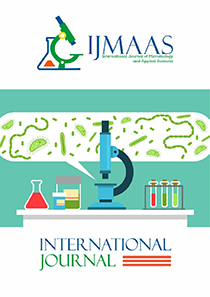Comparative Pollen Study of Three Species of the Family Cucurbitaceae (Cucurbita moschata, Cucurmeropsis mannii, Telfairia occidentalis)
Vol. 3, Issue 3, 2024
KEYWORDS
Cucurbitaceae, pollen viability, Cucurbita moschata, Cucurmeropsis mannii, Telfairia occidentalis, bimodal.
Abstract
The presence of polyploidy in the family Cucurbitaceae has been confirmed. However, there is poor fruit set in this family compared to the prolific production of, especially, male flowers. The aim of this study is to identify the main differences in pollen characteristics of three Cucurbits, Cucurbita moschata, Cucurmeropsis mannii and Telfairia occidentalis which would contribute to the understanding of the pollen viability and poor fruit set observed. In this study, pollen fertility, morphology and size distribution within the three species belonging to the family Cucurbitaceae were carried out under light microscope (LM). Pollen fertility assessment was made with aceto-carmine glycerol jelly. The pollen sizes (µm) varied greatly among the different species. There was some correlation in the pollen size with known chromosome number of these three species. Furthermore, the pollen grain sizes of C. moschata on the frequency distribution graph were observed to be bimodal, while those of T. occidentalis and C. mannii were unimodal. In addition, the wide variation in pollen sizes within each of these species points to the fact that there is some measure of irregular meiosis taking place, an indication of the presence of aneuploids and polyploids. The pollen fertility for the three species was generally high. The taxon under study showed marked variations in the palynomorphs: two distinct pollen types were recognized based on shape, pores and spikes index of the pollen grains. From the pollen shapes and pollen size distribution, T. occidentalis and C. mannii are more closely related than C. moschata.
Current: Vol. 4, Issue 1, 2025

Call for papers
The International Journal of Microbiology and Applied Sciences warmly welcome your valuable articles for publication.
